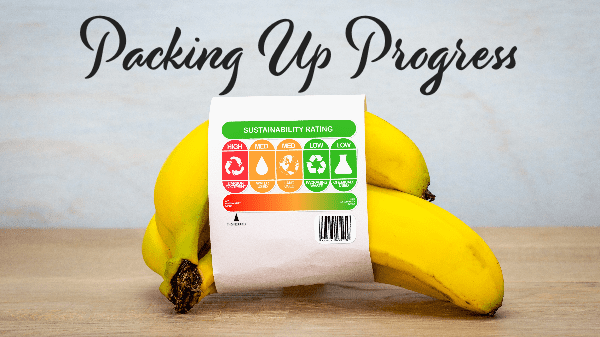In April, Ad Age ran a reader survey in which they asked respondents how much they prioritized sustainable packaging.
Over 80 percent replied they would pay a premium for eco-friendly packaging; they also indicated they would pay as much as 16-percent more for the same products if they were presented in innovative packages.
Improved packaging is clearly important to consumers. This is what has led companies like Bedford Industries to develop return-to-origin technologies like the TagBack program.
“It’s a unique program that empowers consumers and retailers to return produce ties and tags to be processed through Bedford’s in-house equipment and upcycled into other usable materials,” says Belinda Heidebrink, product marketing lead for Bedford Industries, Inc. of Worthington, MN.
“Growers support the program by printing the TagBack logo onto their ties and tags, and consumers return them by mailing them directly to Bedford or dropping them in a collection box,” she adds.
“To date, the program has collected and diverted more than 180,000 pounds of ties and tags from the landfill.”
The traditional retail-level produce bag is also a barrier for food safety, perpetually a consumer priority.
“Over the years, the recyclability of bags has increased. In recent years, pouch bags have become more recyclable and are widely used in retail chains across the country,” says Chuck Sinks, president of sales and marketing for Sage Fruit Company, LLC BB #:163180 in Yakima, WA.
“We’ve also seen the introduction of more paper and cardboard packaging, which consumers tend to feel more positive about purchasing,” he says.
Bob Wright, vice president of operations for grower-shipper Veg-Fresh Farms, LLC {{BB #:130688}} in Corona, CA, cautions, however, that the infrastructure for recycling plastics and other materials has not caught up with consumer desire or legislative agendas. Until the situation changes, he says, sustainable packaging will still face uphill battles.
“We recycle all of our plastic, and it still goes into a landfill,” he laments. “So, recycling doesn’t seem to be working, yet the big plastics companies are pushing it as the long-term solution.
“It’s going to be hard for consumers and retailers to choose the best program, and like any market, many are competing to sell their particular approach. Some flashy, attractive packaging may draw consumers; however, it may, in the end, be more expensive to produce.”
Still, Wright believes the proliferation of options is a reason to be optimistic, even if it’s too soon to predict which will come out on top.
“It’s hard to say what benefits consumers versus what’s just a trend or a hot item, from a marketing perspective,” he warns. “The challenges are in educating consumers and retailers as to what achieves real value in terms of quality, food safety, and price.
“I’m interested to see where bio-assimilation will end up,” he says. “What will bio-assimilated plastics do to a recycled waste stream? It’s an exciting time in our industry, with all the innovations coming to market.”
Conclusion
Three years ago, Forbes predicted four possible futures for food packaging.
Two of them involved sunny predictions: first, a greening of the packaging industry, with plastic disappearing, excess packaging eliminated, and even “packaging-free” retail; and second, a “closed loop” where reusable, durable packaging becomes more common, and consumers simply and easily ship packages back to their origin.
The magazine predicted these developments might happen by 2030, but according to some of our sources, we’re already well on our way to realizing both.
“Shoppers are going to continue to demand innovation in sustainably produced packaging,” says Rachel Atkinson-Leach, vice president of brand and category excellence at Bancroft, WI-based RPE, Inc. BB #:105471
“Just about every package introduced contains some type of sustainable messaging, and overall, package messaging has evolved.
“Even older technologies are new again, because consumers have shifted their focus and attention to requiring more information and more functionality from packages.”
With more consumer demand, increased funding for research into innovative packaging design and functionality, and legislation being introduced to make manufacturers responsible for the end-life cycle of their packaging, the future will bring ample opportunity for the industry.
This is an excerpt from the Applied Technology department in the July/August 2023 issue of Produce Blueprints Magazine. Click here to read the whole issue.



